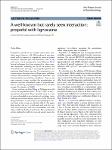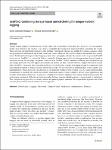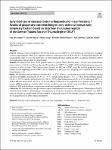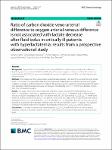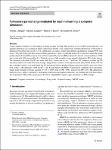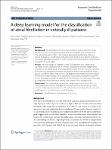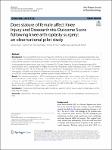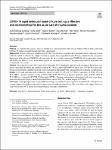Search
Author
- Osman, Ahmed I. (5)
- Daqing, Ma (3)
- Jorgensen, Ed (3)
- Li, Yan (3)
- next >
Subject
- kinh tế (26)
- Economics (12)
- programming (10)
- XRD (10)
- next >
Date issued
- 2020 - 2025 (2129)
- 2010 - 2019 (129)
- 2000 - 2009 (9)
- 1999 - 1999 (1)
Has File(s)
Search Results
Propofol is considered an excellent intravenous anesthetic agent. However, a 30–70% incidence of pain associated with its injection is a significant source of patient discontent. Injection pain and discomfort rank as the sixth most crucial perioperative issue (Desousa 2016). Several techniques have been employed to reduce injection discomfort, including the use of the forearm and antecubital veins, freezing or warming the injectate, and aspirating blood before injection. Pre-treatment or contemporaneous administration of thiopentone, pethidine, fentanyl, dexamethasone, nitroglycerine, ketorolac, and local anesthetics has also been considered. |
Traditional local tamper-evident logging systems use cryptographic ratchets. In previous works, we presented SealFS (from now on, SealFSv1), a system that follows a radically different approach for local tamper-evident logging based on keystream storage. In this paper, we present a new version, SealFSv2, which combines ratcheting and storage-based log anti-tamper protection. |
Damage control orthopaedics (DCO) und early total care (ETC) are well-established strategies for managing severely injured patients. There is no definitive evidence of the superiority of DCO over ETC in polytrauma patients. We conducted this study to assess the probability of a polytraumatised patient undergoing DCO. In addition, the effect of DCO on complications and mortality was investigated. |
In military trauma, disaster medicine, and casualties injured in remote locations, times to advanced medical and surgical treatment are often prolonged, potentially reducing survival and increasing morbidity. Since resuscitation with blood/blood components improves survival over short pre-surgical times, this study aimed to evaluate the quality of resuscitation afforded by blood/blood products or crystalloid resuscitation over extended ‘pre-hospital’ timelines in a porcine model of militarily relevant traumatic haemorrhagic shock. |
High ratio of the carbon dioxide veno-arterial difference to the oxygen arterial-venous difference (PvaCO2/CavO2) is associated with fluid bolus (FB) induced increase in oxygen consumption (VO2). This study investigated whether PvaCO2/CavO2 was associated with decreases in blood-lactate levels FB in critically ill patients with hyperlactatemia. |
Using computer simulation we investigated whether machine learning (ML) analysis of selected ICU monitoring data can quantify pulmonary gas exchange in multi-compartment format. A 21 compartment ventilation/perfusion (V/Q) model of pulmonary blood flow processed 34,551 combinations of cardiac output, hemoglobin concentration, standard P50, base excess, VO2 and VCO2 plus three model-defining parameters: shunt, log SD and mean V/Q. |
Atrial fibrillation (AF) is the most common cardiac arrhythmia in the intensive care unit and is associated with increased morbidity and mortality. New-onset atrial fibrillation (NOAF) is often initially paroxysmal and fleeting, making it difficult to diagnose, and therefore difficult to understand the true burden of disease. Automated algorithms to detect AF in the ICU have been advocated as a means to better quantify its true burden. |
Knee osteoarthritis (OA) occurs frequently in females. So far, no study has evaluated postoperative outcome measures in females based on body height. We aimed to evaluate postoperative pain relief and Knee Injury and Osteoarthritis Outcome Score (KOOS) at 6 months in women following total knee arthroplasty (TKA). |
To evaluate the accuracy and cost benefit of a rapid molecular point-of-care testing (POCT) device detecting COVID-19 within a traumatological emergency department. |
Management of a patient with an active pheochromocytoma and severe aortic stenosis remains controversial. Adrenalectomy for a pheochromocytoma poses a high risk for stroke, hypertensive emergency, and mortality, compounded by the cardiovascular instability of severe aortic stenosis. In this case report, successful management of an active pheochromocytoma with concomitant severe aortic stenosis was accomplished by performing transcatheter aortic valve replacement under monitored anesthesia care prior to laparoscopic adrenalectomy. |

